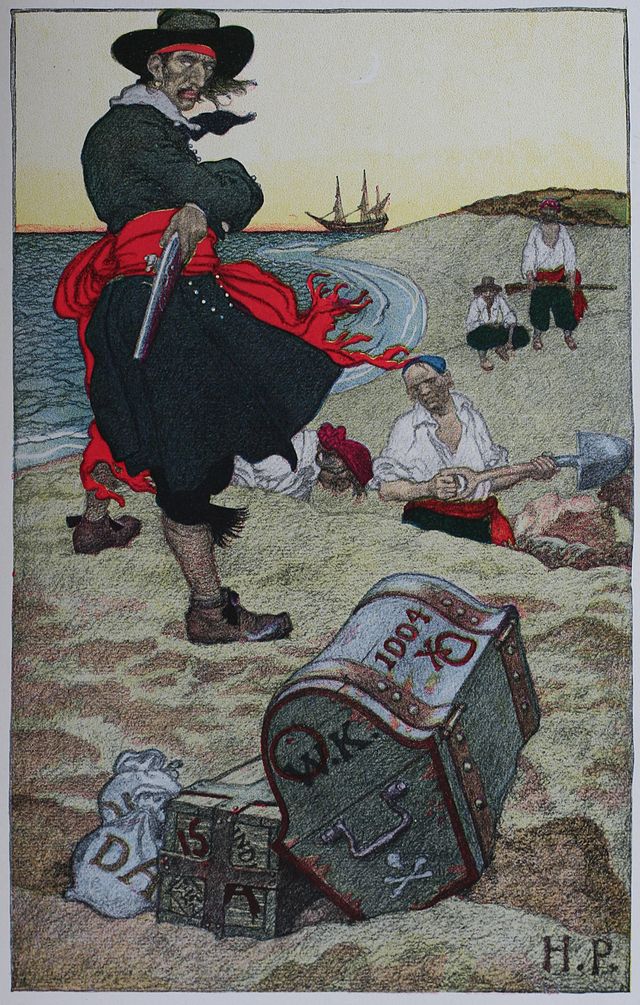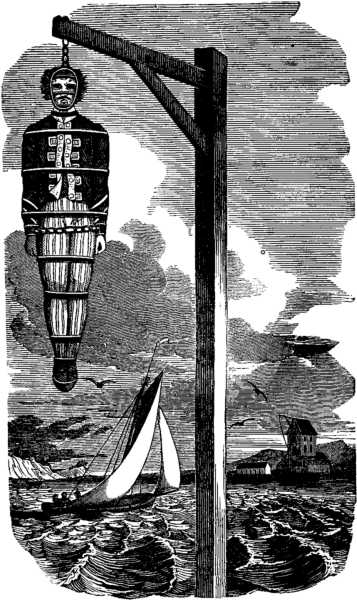 William Kidd spent most of his life as a privateer and pirate hunter. His final voyage, for which he was accused of piracy, was a largely unsuccessful venture full of bad luck. Captain Kidd’s tale serves as a warning of how easily one could cross the thin line between privateering and piracy.
William Kidd spent most of his life as a privateer and pirate hunter. His final voyage, for which he was accused of piracy, was a largely unsuccessful venture full of bad luck. Captain Kidd’s tale serves as a warning of how easily one could cross the thin line between privateering and piracy.
Kidd’s early career saw him serving as part of a joint English-French crew aboard the Sainte Rose, a French privateering vessel in the Caribbean. When war broke out between the two nations in 1689, the Englishmen led a mutiny, and made William Kidd the captain. He sailed the ship, now renamed the Blessed William, to the English island of Nevis. From here, he operated as an English privateer, defending the colony from French attacks. In 1690, his ship was stolen by Robert Culliford, a mutineer who later turned pirate. Later, Kidd became a respected citizen and ship owner of New York City, from which he sometimes sailed to fight off enemy privateers.
In 1695, Captain Kidd sailed the Adventure Galley down the Thames River out of London. His mission was to sail around Africa to the Red Sea and the Indian Ocean, where he was to hunt down pirates that were harassing East India Company ships, and attack French shipping. Kidd crewed his ship with men he handpicked for their loyalty and skill, and he had the backing of investors who intended on splitting shares of captured loot.
Misfortune struck early in his journey: he failed to fire his guns in salute of a naval ship, which took offense and stopped him. Most of his crew were impressed into service for the navy in revenge, so Kidd sailed to New York to hire a new crew — most of whom were pirates or hardened criminals. He then set sail again for the Cape of Good Hope in South Africa, but again encountered disaster. While stopped in the Comoros islands, a cholera outbreak killed a third of his crew. He also discovered that Adventure Galley had sprung a number of leaks, making it unseaworthy until it was patched up.
By the time Kidd reached the Red Sea, most of his crew were close to mutiny. It was nearly a year into the voyage, and they had suffered hardships without any prizes to show for it. Kidd was unable to locate any pirates or French ships, and argued regularly with the crew, who wanted him to turn pirate and seize neutral vessels. One of these disagreements devolved into violence, with Kidd murdering a gunner by throwing a bucket at his head. Kidd was unconcerned about the consequences of this action, claiming his prominent friends in England would help him avoid trouble.

Captain Kidd burying his treasure.
Soon, Kidd had to bend to his crew’s pressure to avoid a revolt, and he made several attacks on neutral shipping. He eventually captured the Quedagh Merchant, an Armenian vessel carrying a wealth of cloth, gold, silver, and spices. While the ship was flying French colors, it turned out it was captained by an Englishman and merely operating under a right of safe passage from the French. Kidd wanted to let the ship go, but his angry crew insisted on keeping their prize and its plunder. Kidd gave in, hoping that the ship’s French passes would make it a legal capture under his commission. But when word reached England of the capture, he was publicly denounced as a pirate.
When Captain Kidd reached Madagascar, he once again encountered Robert Culliford at St. Mary’s Island, who had stolen the Blessed William from him years before. While Kidd plotted revenge, his men had other ideas, and deserted him to join up with the pirate captain. Kidd was left with just 13 loyal crew. He scuttled the Adventure Galley, which had become too leaky to keep sailing, and sailed back to the Americas aboard the Quedagh Merchant, now renamed the Adventure Prize, intending to return to New York and end his voyage.
When Captain Kidd entered the Caribbean, he learned that he was now a man wanted for acts of piracy. He ditched his incriminating vessel, and buried a portion of his treasure on an island, hoping to use its location as a legal bargaining chip. This was one of the only few known instances of a pirate actually burying treasure – most pirates, knowing they could be captured and executed at any time, enjoyed spending their riches as soon as they could.

Captain Kidd gibbeted over the Thames.
When Kidd reached New England, he was imprisoned and sent to London, where he was placed on trial for piracy and murder. His buried treasure was even recovered and used as evidence against him. Kidd was convicted of all charges, and hanged on May 23, 1701. His bad luck followed him even in death – the hangman’s rope broke, requiring a second attempt to execute him. His body was gibbeted over the Thames for three years as a warning to would-be pirates.
The buried treasure and sensational trial helped grow Captain Kidd’s legend after his death, with stories told that he had buried more elsewhere. Generations of a treasure-hunters have sought his supposed lost riches. This legend has led to his presence in many popular works. Shortly after his death, a song named “The Ballad of Captain Kidd” rapidly circulated through the colonies, giving an embellished tale of his life. The book The Pirate Hunter is notable for giving an in-depth historical view of his life, and contrasting it with that of his rival pirate Robert Culliford. Many stories and films have included the search for his buried treasure. The video game Sid Meier’s Pirates! has Kidd operating one of several rival pirates to the player, and his buried treasure can be found.
